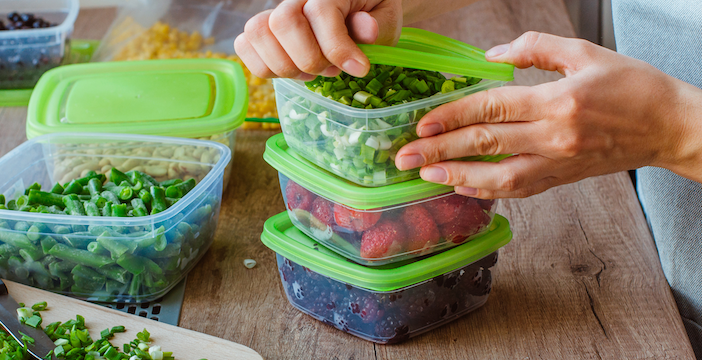
Maintaining a diabetes-friendly diet is crucial for managing blood sugar levels and promoting overall health. The kitchen serves as the heart of your nutritional journey, where thoughtful choices and smart techniques can make a significant impact on your well-being. In this article, we will explore a range of quick kitchen tips and tricks to help you prepare healthy, delicious diabetes-friendly meals effortlessly.
Get started with these 10 quick kitchen tips and tricks!
1. Use mindful meal planning
Begin your journey to diabetes-friendly cooking by planning your meals in advance. Outline a weekly menu that incorporates a variety of colorful vegetables, lean proteins, whole grains, and healthy fats. This not only ensures a balanced diet but also simplifies your grocery shopping. Cook in batches and store portions in the refrigerator or freezer for later use. This saves time on busy days.
2. Prep ingredients in advance
Wash, chop, and portion out vegetables, fruits, and proteins ahead of time for quick assembly during meal prep. Consider overnight preparation to ease the morning rush by making overnight oats or chia pudding.
3. Incorporate one-pan meals to your plan
Simplify clean-up by preparing meals that can be cooked in a single pan or sheet pan. Roasting vegetables with protein such as fish, poultry or tofu is a great example.
4. Opt for healthier cooking methods
Consider roasting, grilling (less mess to clean up!), steaming, and sautéing (instead of frying). For example, roasting vegetables enhances their natural sweetness without adding extra fats.
5. Utilize frozen vegetables
Keep a variety of frozen vegetables in your freezer for convenient and quick additions to stir-fries, soups, and casseroles.
6. Stock up on quick grains
Opt for quick-cooking grains like quinoa, bulgur, millet or couscous for speedy side dishes.
7. Prep some smart snacking
Stock your kitchen with healthy snacks like cut-up vegetables, fruit slices, and yogurt for quick, satisfying bites.
8. Experiment with spices
Instead of using salt to flavour dishes, get a little creative and use herbs and spices to enhance flavours instead. Parsley, basil, oregano, rosemary and dill are all rich in flavour and will spice up any main dish. The same goes for sugar: if you’re making a dessert, think of replacing sugar with cinnamon, cloves or nutmeg. All of these flavours pack a real punch!
9. Try these baking substitutions
If you’re a fan of baked goods, you can replace the oil or butter in a baking recipe with puréed fruit, such as unsweetened applesauce or mashed prunes. However, if you still want to use fat when you’re baking, then consider replacing butter and shortening with sunflower or canola oil: both are rich in monounsaturated fat, and canola oil also has heart-healthy omega-3 fatty acids.
10. Go vegetarian!
There are lots of ways to replace or reduce the meat content in main dishes. Think about a tofu stir-fry, vegetarian chili or an Indian vegetarian curry. With the addition of lentils and beans, these dishes all provide excellent sources of protein. Consider adding broccoli or cauliflower to macaroni and cheese (you can cook it with the pasta), and incorporate garden vegetables (for example, chopped onion, peppers or zucchini) into pasta sauces.
A diabetes-friendly kitchen is the foundation for managing your health with delicious and nutritious meals. By implementing these kitchen tips, you can create a supportive environment that aligns with your dietary goals. Remember, consulting with a healthcare professional or a registered dietitian can provide personalized guidance and ensure your culinary journey is tailored to your specific needs and preferences. Happy and healthy cooking!



